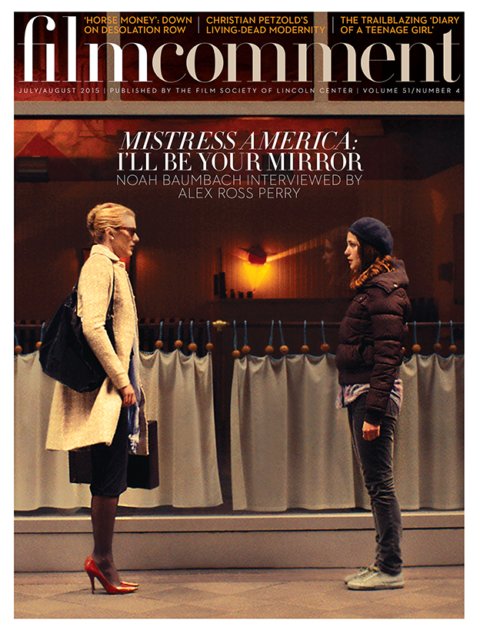Charles Napier makes an impression. Let us consider for a moment the impression he makes—as Sheriff Harry Sledge in Russ Meyer’s Supervixens (75)—while stomping on the lovely Shari Eubank’s face. It is a lasting one. To watch this cartoon-cornpone character actor—jaw as big as a jar of pickled eggs and mouth filled (as Meyer used to boast) with “four more teeth than Burt Lancaster”—swerve from erotic bemusement to homicidal frenzy in the blink of a psychotic eye is to remain forever scarred.

Supervixens
Wearing a leer as bent as a country road and a pair of spiffy saddle shoes, the Kentucky-born Napier (1936-2011) brutally stabs, beats, and electrocutes the frighteningly vulgar Eubank in her bathtub (don’t worry, she’s resurrected halfway through the film). By the time the actor is done, Meyer has both made clear his fealty to Psycho and set the stage for Kubrick/Nicholson’s iconic “Here’s Johnny!” Shining attack.
The careers and legacies of Napier and Meyer are forever interwoven, something that irritated the actor for a time, though he finally embraced it. He’d gotten his first screen break from Meyer, and first incarnated Harry (then “Harry Wilson”) in his film debut, Meyer’s misbegotten-but-still-terrific desert dope-running saga Cherry, Harry & Raquel! (69). Napier owned the character—foul-humored, hopelessly horny (and glimpsed full frontal), thick as leather—and when off camera, paid attention to everything else going on during the shoot, pitching in on stunts, doing makeup, lugging the gear. Before that, he’d studied art at Western Kentucky University (and never did stop painting), coached some basketball, and bummed around Florida doing theater for a minute (Iago, even). He landed in Hollywood in 1966 and had reasonably good luck: a Mission: Impossible episode followed by a cult-classic turn on the Star Trek episode “Way to Eden” as future-hippie Adam, looking like a cross between Gomer Pyle and Harpo Marx, twanging his space-axe and eating a fatal apple. He followed Cherry with an independently made trucker movie called Moonfire (70), co-starring with former boxer Sonny Liston and screen vet Richard Egan. Napier had trucking in his blood and split Hollywood for a couple of years to drive a big rig and write for Overdrive magazine. Before he left, he was picked up by Meyer once again, for the director’s legendary two-film tenure at Universal, serving as a featured player in both Beyond the Valley of the Dolls (70) and The Seven Minutes (71).

Rambo: First Blood Part II
Finished with trucking in ’73, Napier rolled west again, and was eventually sent on a casting call to be seen by—but not actually meet—Alfred Hitchcock. “Hire him,” the filmmaker drawled from a dark corner of the room, and by fiat Napier was signed by Universal. That led to a steady string of television gigs—Starsky & Hutch, Baa Baa Black Sheep, The Rockford Files, B.J. and the Bear—and unsold pilots. It was a completely respectable career but he never quite caught on, never got close to A-list action. Was it his past in Meyer’s “porno” films? As it turned out, young Jonathan Demme was an early admirer of Napier’s then-X-rated performances for Meyer, and he cast the actor in virtually every fiction feature he made from Handle with Care (77) to The Manchurian Candidate (04). Demme gave him some extraordinary parts, and not just as a hairdresser in Married to the Mob (94). Want a head-spinning rediscovery? Check out Napier in Demme’s De Palma–esque Hitchcock mash-up Last Embrace (79), playing a version of Kim Novak from Vertigo, opposite Roy Scheider’s Jimmy-Stewart-in-a-bell-tower.
The actor’s featured role in Rambo: First Blood Part II (85) as treacherous Stallone nemesis Murdock kept him visible, waiting for more and better parts. In the meantime, Napier did it all: growls for TV’s The Incredible Hulk and myriad other voiceover gigs; bits on The Golden Girls and Murder, She Wrote; and—once his early cult celebrity had been reified for the Nineties mainstream—featured turns in The Cable Guy (96) and Austin Powers: International Man of Mystery (97). He kept working, and left as many gold nuggets as buffalo chips in his wake: Ruggero Deodato’s underappreciated summer-camp slasher Euro-flick Body Count (85) provides an entertaining fusion of the two. “I always felt I played myself, or some kind of version of myself,” Napier told an interviewer the year he died. “If you think about it, old actors probably don’t even have a self.” On the contrary: the always-himself Charles Napier left only the most indelible of marks.








